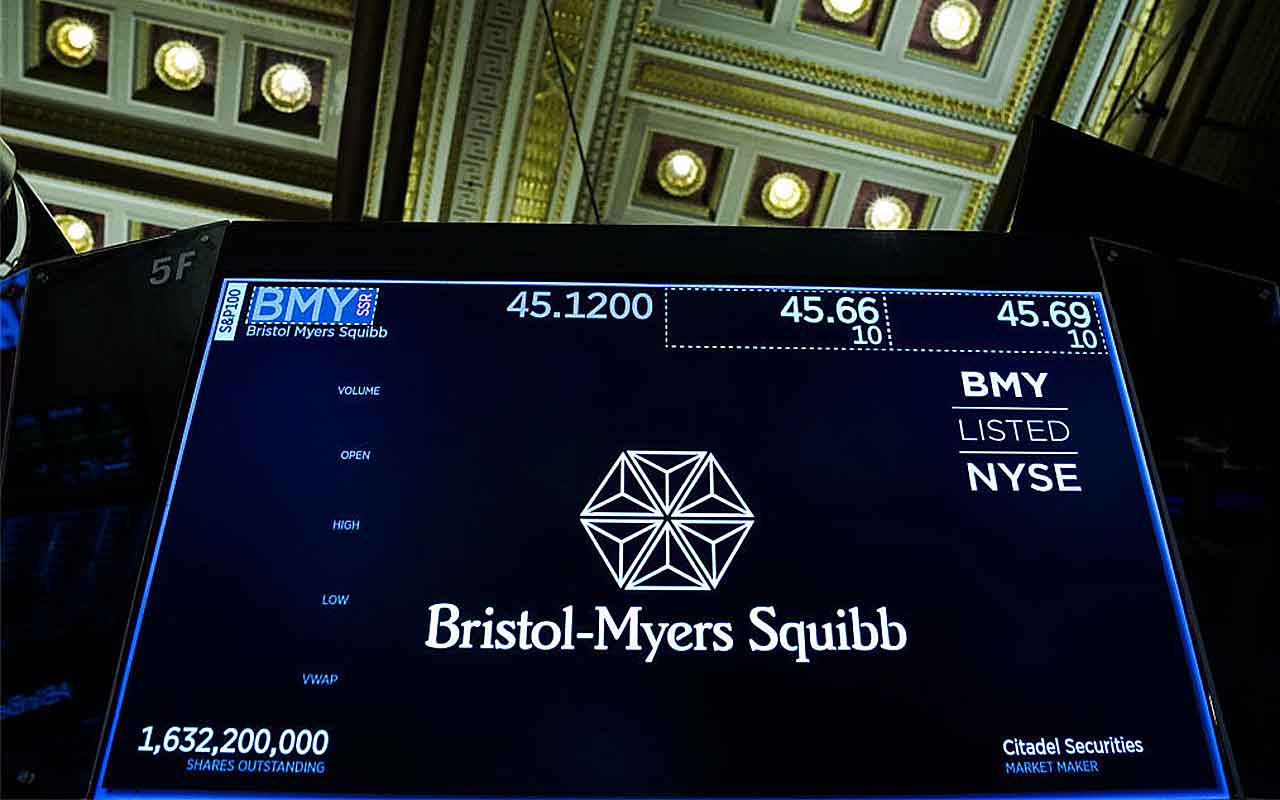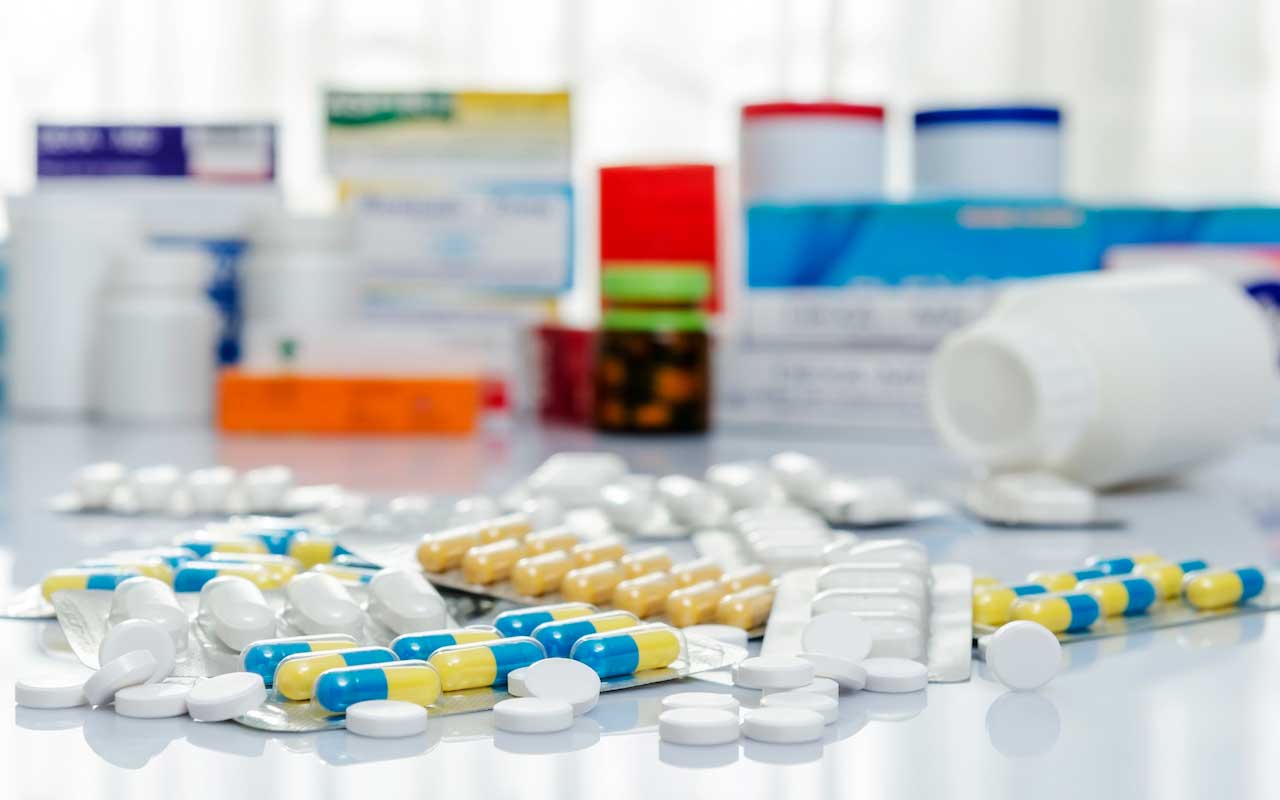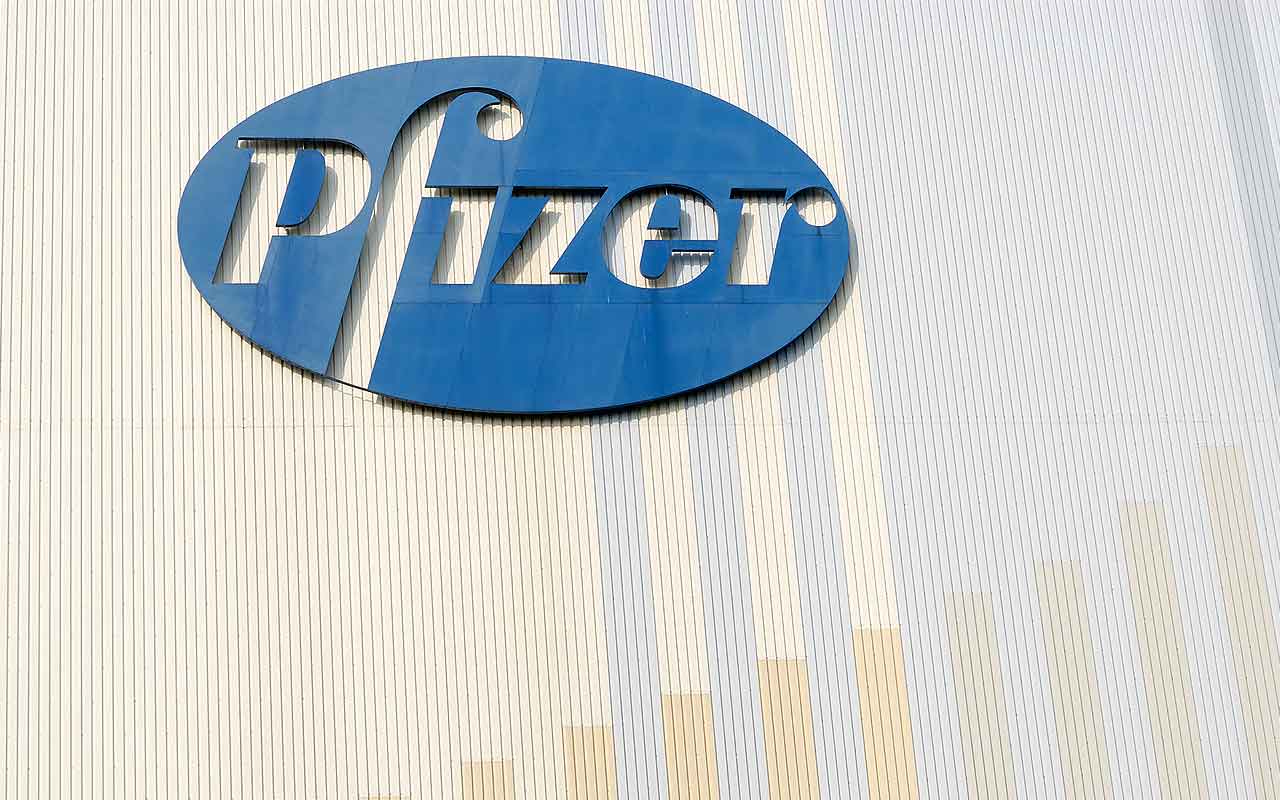5 Pharmaceutical Stocks With Big Moats and Bridges
Pharmaceuticals are a tricky business.


Pharmaceuticals are a tricky business. Public policy, science, R&D, global growth and regulation all play a role, sometimes outsize, in the success of pharmaceutical stocks.
But some Big Pharma companies and a few other industry firms have managed these and other factors better than others. And along the way, they have built up a considerable “moat” – some sort of considerable competitive advantage – around profitable businesses. Some of these same companies are building bridges to further profitability via deep drug pipelines, innovative new treatments and transformative acquisitions.
Here’s a deeper look into five pharmaceutical stocks that have compelling moats, bridges or both. These advantages make them more likely to provide stable growth over the long term.
Disclaimer
Data is as of Feb. 27.

Zoetis
- Market value: $45.0 billion
- Dividend yield: 0.7%
- Zoetis (ZTS, $93.80) is among the world’s leading pharmaceutical companies. However, investors often overlook Zoetis because while it manufactures medicines and vaccines, it does so for livestock and pets.
Don’t make the same mistake.
The U.S. is home to more than 180 million pet dogs and cats, as well as millions more horses and livestock. But unlike the human health market, the one for animals isn’t chock full of well-capitalized and fierce pharmaceutical stocks such as Johnson & Johnson (JNJ) or GlaxoSmithKline (GSK). Big Pharma has some 81,000 sales reps and spent nearly $3 billion on air time for commercials through just the first eight months of 2018.
In animal health, $45 billion Zoetis is the 800-pound gorilla. It’s also a global player, with approximately half of its sales occurring outside of the United States. The case for the company is both the breadth and the depth of its moat, as well as the stability of the markets it serves. Pets or livestock, animal populations are growing steadily, and owners tend to spend generously (whether it’s out of love or to protect their profits).
These factors have enabled ZTS to grow earnings from $1.16 per share in 2013 to $2.93 last year, for average annual profit growth of 26.1%.
Analysts at CFRA expect Zoetis to raise prices in its “companion” segment, where pet owners prefer to pay extra for medicines rather than withhold treatment.

Vertex Pharmaceuticals
- Market value: $48.1
- Dividend yield: N/A
- Vertex Pharmaceuticals (VRTX, $189.81) is a leader in the treatment of cystic fibrosis. The company’s three cystic fibrosis drugs – Kalydeco, Orkambi and Symdeko – treat different genetic variations of the disease.
What’s compelling about Vertex is that these drugs are throwing off huge amounts of cash, enabling Vertex to invest in R&D and maintain its lead in cystic fibrosis, while diversifying its portfolio into new diseases. These include sickle-cell disease, kidney diseases, antitrypsin deficiency (which can lead to liver and kidney disease) and acute pain. Since 2015, Vertex has grown its cash hoard from $1.0 billion to $3.2 billion, or 47% annually.
Vertex also has been able to achieve financial success with a relatively low penetration of its existing market in the U.S., Europe and Australia. Currently, just 18,000 patients are on Vertex cystic fibrosis medicines against 37,000 who are eligible.
Further, the company believes it can expand the eligibility pool in two ways. First, by “expanding the label,” Vertex can treat younger patients and increase the eligibility pool to about 44,000 patients. Second, by combining its formulas into a triple-combination therapy, VRTX estimates it can increase the pool of eligible patients to approximately 66,000.
Vertex said it plans to file its New Drug Application (NDA) for its combo treatment by mid-year.

Bristol-Myers Squibb
- Market value: $83.7 billion
- Dividend yield: 3.2%
- Bristol-Myers Squibb (BMY, $50.96) is raising prices on its franchise drugs, including Opdivo, Yervoy and Sprycel. Cancer drug Opdivo alone delivered more than $6.7 billion in sales in 2018 – a 36% increase over 2017.
Price increases alone, however, won’t make Bristol-Myers a winner. But BMY has more – namely, a pending acquisition of Celgene (CELG) and a stable of multibillion-dollar drugs.
Bristol-Myers Squibb’s $74 billion deal for the biotechnology company could close during the third quarter of 2019, and it would position BMY to accomplish two critical feats. First, it would enable BMY to build a larger moat around its cancer franchise with the addition of Celgene’s powerhouse Revlimid. Further, the deal would strengthen the company’s presence in the arthritis market by combining its Orencia (2018 sales of $2.7 billion) with Celgene’s Otezla (2018 sales of $1.6 billion).
At a strategic level, the Celgene deal would build wider and deeper moats for BMY around its cancer and arthritis franchises. It would do little for Bristol-Myers’ cardiovascular drug Eliquis, but with annual sales of $6.4 billion (up 32% from 2017), it doesn’t need much help.
The deal is by no means assured. Activist investor Starboard Value has taken an undisclosed stake in BMY, and has recently announced it will try to build opposition against the deal. Investment firm Wellington Management, which is Bristol-Myers’ biggest shareholder at more than 8%, also voiced its displeasure with the Celgene transaction.
In fact, Starboard could push Bristol in a completely different direction. “There is a better path forward for Bristol-Myers, either as a more profitable standalone company with a more focused, lower-risk strategy, or in a potential sale of the whole Company,” Starboard CEO Jeffrey Smith wrote to BMY shareholders.
Outside of the M&A sphere: Revenue and earnings are projected to grow at a mid-single-digit pace over the next couple years, and the stock trades at less than 12 times estimates for next year’s earnings, versus a 16.5 multiple on the Standard & Poor’s 500-stock index. Tack on a 3.2% dividend yield, and BMY shares appear to be an appealing value.

Eli Lilly
- Market value: $130.5 billion
- Dividend yield: 2.3%
- Eli Lilly (LLY, $125.68) is a pharmaceutical-stock titan with six billion-dollar-plus brands. These include erectile dysfunction treatment Cialis, as well as type-2 diabetes treatment Trulicity, the company’s best-selling drug at $3.2 billion in 2018 revenues (up 58% year-over-year). Overall, Lilly’s diabetes franchise accounts for about a third of the company’s revenues, and it is No. 2 in the market behind Novo Nordisk (NVO).
While diabetes represents Lilly’s biggest opportunity, the company is building bridges into new markets. LLY recently entered the migraine market with Emgality. Yes, 2018 sales were de minimis – just $5 million – but this is a wide, growing market. Worldwide, GlobalData projects a 10.3% CAGR in the migraine market, which could swell to $8.7 billion by 2026.
In a dubious distinction, the bulk of migraine headaches occur in the U.S., where roughly 38 million Americans suffer from the condition. Despite a number of competitors, then – notably Teva Pharmaceuticals (TEVA) and its injectable Ajovy – there’s plenty of room for Emgality to develop into a massive franchise.
Lilly also has built a bridge into the cancer market with the acquisition of Loxo Oncology, which was announced in January. Loxo doesn’t have product revenues yet, but it brings Eli Lilly a portfolio of approved and investigational precision medicines for the oncology market. Oncology may be the next LLY’s next vast frontier.
While the company’s moats widen and its bridges into oncology and the migraine market develop, investors are paid a modest 2.2% dividend to wait for growth via price increases and organic expansion in Lilly’s impressive portfolio.

Pfizer
- Market value: $249.9 billion
- Dividend yield: 3.3%
- Pfizer (PFE, $42.93) boasts a superb portfolio with several category-leading drugs including Lyrica (for pain), Eliquis (for clotting), Prevnar 13 (a diphtheria vaccine), Enbrel (arthritis and psoriasis) and Ibrance (breast cancer). Those are just some of the billion-dollar franchises that have driven (and/or can continue to deliver) impressive organic growth. Indeed, CFRA analysts are forecasting $2.87 per share in profits versus $1.86 in 2018.
Pfizer also wields a roughly $8 billion R&D budget to develop its impressive pipeline. This pipeline includes a likely 2019 approval of Bavencio plus Inlyta (for renal cell carcinoma), potential approvals of as many as four biosimilars (drugs designed to have active properties similar to those of a drug that has previously been licensed) and results from Phase 3 studies of drugs treating sickle-cell disease, dermatitis and osteoarthritis. The osteoarthritis treatment (tanezumab) is being developed in conjunction with Eli Lilly.
The pharma business is difficult and rife with competition, not to mention looming patent expirations. For instance, $5 billion Lyrica will face generic competition starting in June, and $2.1 billion Enbrel has been buffeted by the development of biosimilars from competitors.
But investors are somewhat insulated from the volatility of events such as these by the sheer breadth of Pfizer’s portfolio, which also churns out plenty of cash to sustain a healthy 3.4% yield. The company did slash its dividend in half to 16 cents per share in 2009, but it has since recovered and then some to its current 36 cents quarterly.
Get Kiplinger Today newsletter — free
Profit and prosper with the best of Kiplinger's advice on investing, taxes, retirement, personal finance and much more. Delivered daily. Enter your email in the box and click Sign Me Up.

-
 Stock Market Today: Stocks Soar on China Trade Talk Hopes
Stock Market Today: Stocks Soar on China Trade Talk HopesTreasury Secretary Bessent said current U.S.-China trade relations are unsustainable and signaled hopes for negotiations.
By Karee Venema
-
 2026 Disney Dining Plan Returns: Free Dining for Kids & Resort Benefits
2026 Disney Dining Plan Returns: Free Dining for Kids & Resort BenefitsPlan your 2026 Walt Disney World vacation now. Learn about the returning Disney Dining Plan, how kids aged three to nine eat free, and the exclusive benefits of staying at a Disney Resort hotel.
By Carla Ayers
-
 The Cheapest Places To Retire in the US
The Cheapest Places To Retire in the USWhen you're trying to balance a fixed income with an enjoyable retirement, cost of living is a crucial factor to consider.
By Stacy Rapacon
-
 Dividends Are in a Rut
Dividends Are in a RutDividends may be going through a rough patch, but income investors should exercise patience.
By Jeffrey R. Kosnett
-
 Municipal Bonds Stand Firm
Municipal Bonds Stand FirmIf you have the cash to invest, municipal bonds are a worthy alternative to CDs or Treasuries – even as they stare down credit-market Armageddon.
By Jeffrey R. Kosnett
-
 Can Stocks Picked by Artificial Intelligence Beat the Market? 3 Stocks to Watch
Can Stocks Picked by Artificial Intelligence Beat the Market? 3 Stocks to Watchstocks An artificial intelligence stock-picking platform identifying high-potential equities has been sharp in the past. Here are three of its top stocks to watch over the next few months.
By Dan Burrows
-
 High Yields From High-Rate Lenders
High Yields From High-Rate LendersInvestors seeking out high yields can find them in high-rate lenders, non-bank lenders and a few financial REITs.
By Jeffrey R. Kosnett
-
 Time to Consider Foreign Bonds
Time to Consider Foreign BondsIn 2023, foreign bonds deserve a place on the fringes of a total-return-oriented fixed-income portfolio.
By Jeffrey R. Kosnett
-
 5 Stocks to Sell or Avoid Now
5 Stocks to Sell or Avoid Nowstocks to sell In a difficult market like this, weak positions can get even weaker. Wall Street analysts believe these five stocks should be near the front of your sell list.
By Dan Burrows
-
 Best Stocks for Rising Interest Rates
Best Stocks for Rising Interest Ratesstocks The Federal Reserve has been aggressive in its rate hiking, and there's a chance it's not done yet. Here are eight of the best stocks for rising interest rates.
By Jeff Reeves
